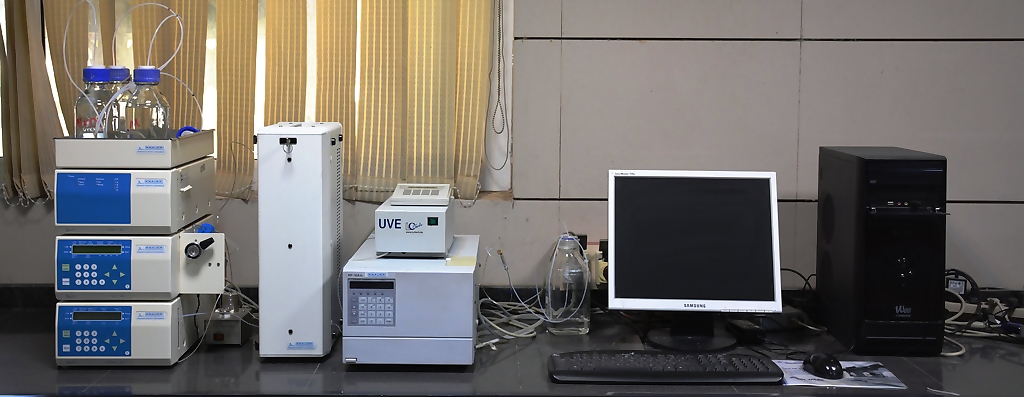LEARNING FACILITIES
- Museum of Science and Nature
- Central Laboratory
- Atomic Absorption Spectrophotometry
- Multi-Channel Battery Test System
- CHNS-O Elemental Analyzer
- GenPure ultra-pure water systems
- Scanning electron microscopy
- Gas Chromatography
- Gass Chromatography Mass Detector
- High-Performance Liquid Chromatography
- Inductively Coupled Plasma
- Liquid Nitrogen Producing Machine
- FT-NMR spectrometer
- Scanning Probe Microscopy
- Simultaneous Thermal Analyzer
- Transmission Electron Microscopy
- Electrospinning
HIGH-PERFORMANCE LIQUID CHROMATOGRAPHY

(Model Smartline Manufactured by Knauer)
High-performance liquid chromatography (HPLC) is a form of liquid chromatography to separate compounds that are dissolved in solution. HPLC instruments consist of a reservoir of mobile phase, a pump, an injector, a separation column, and a detector. Compounds are separated by injecting a plug of the sample mixture onto the column. The different components in the mixture pass through the column at different rates due to differences in their partitioning behavior between the mobile liquid phase and the stationary phase.
Instrumentation
Solvents must be degassed to eliminate formation of bubbles. The pumps provide a steady high pressure with no pulsating, and can be programmed to vary the composition of the solvent during the course of the separation. The liquid sample is introduced into a sample loop of an injector with a syringe. When the loop is filled, the injector can inject the sample into the stream by placing the sample loop in line with the mobile phase tubing. The presence of analytes in the column effluent is recorded by detecting a change in refractive index, UV-VIS absorption at a set wavelength, fluorescence after excitation with a suitable wavelength, or electrochemical response. Mass spectrometers can also be interfaced with liquid chromatography to provide structural information and help identify the separated analytes.
It is manufactured by Knauer Company. It has a column oven and two detectors:
1) UV/Vis detector model S-2600, UV
2) Spectrofluorometric detector RF-10AXL

